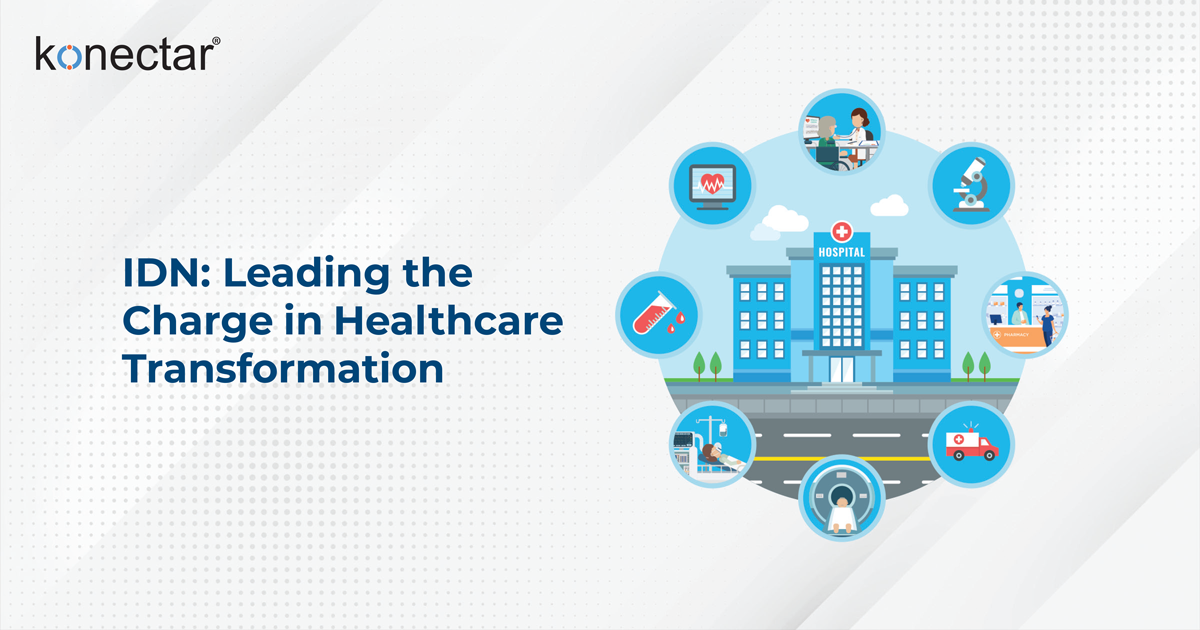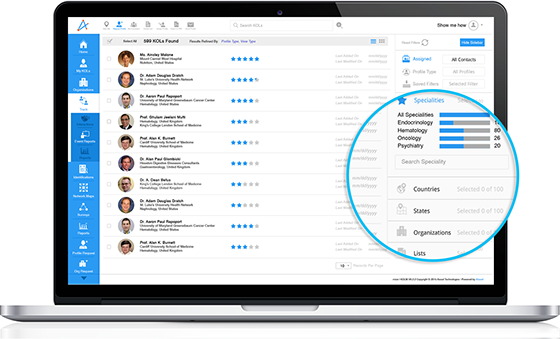4 Dec 2023
IDN: Leading the Charge in Healthcare Transformation

The rising healthcare costs are significantly impacting the U.S. population, particularly those grappling with different healthcare conditions. Although traditional avenues for accessing healthcare persist, IDN (Integrated Delivery Network) has emerged as the favored method for seeking comprehensive, quality, and cost-effective healthcare solutions.
IDNs broadened their capabilities in the past few years and extended their geographical reach through strategic acquisitions. As a result, they are increasingly establishing themselves as the prevailing model for institutional care.
In this article:
Characteristics of Integrated Delivery Networks
-
Regional Dominance and Market Influence
Leading IDNs typically exert significant control within their regional markets, facilitating cost reductions through advantageous negotiations with payers, drug manufacturers, and suppliers.
-
Streamlined Clinical Integration
Effective protocol adherence and enhanced patient outcomes are achieved through comprehensive clinical integration, wherein providers within this healthcare system share electronic health record systems for optimal evaluation.
-
Unified HCP (Healthcare Professionals) Alignment
Large IDNs exercise centralized control over Healthcare Professionals, fostering a cohesive brand identity across regional facilities.
-
Comprehensive Continuum of Care
They excel in providing a spectrum of healthcare services, from preventative and urgent or primary care to diverse therapies, treatments, and post-acute care, ensuring a holistic approach to patient well-being.
-
Strategic Reimbursement Approaches
Major delivery networks often exhibit the capability to collaborate with payers, advocating for improved patient outcomes. Their influence extends to securing favorable payer contracts and shaping physician and patient behavior through specific treatments and protocols.
Decoding IDN Cost Savings Strategies
-
Economies of Scale and Resource Consolidation
IDNs comprise diverse healthcare entities, such as hospitals, clinics, and primary care providers, under a unified structure. This vast consolidation allows them to achieve economies of scale by pooling resources and centralizing administrative functions.
Moreover, with a more extensive network, IDNs have increased negotiating power when purchasing medical supplies, pharmaceuticals, and equipment in bulk. This leads to cost savings as they can secure more favorable pricing and terms. Through these initiatives, these healthcare delivery models can effectively secure competitive rates in their supply chain, reducing overall healthcare expenses.
-
Enhanced Care Coordination and Preventive Measures
IDNs prioritize seamless communication and collaboration among healthcare providers across various specialties and settings. This ensures that crucial patient information is shared efficiently, preventing communication gaps leading to redundant tests, unnecessary procedures, or conflicting treatment plans. Moreover, they offer a range of end-to-end healthcare services, including primary care, specialty care, diagnosis, and post-acute care, which makes it convenient for patients to get quality care at one place.
-
Data-Driven Decision-Making
Integrated electronic health records (EHR) systems facilitate data sharing and analysis. This data-driven approach enables healthcare providers to make informed decisions, identify cost-effective treatments, and implement best practices, ultimately reducing unnecessary procedures and expenses.
-
Care Standardization
It standardizes healthcare delivery to enhance Patient Care. This approach reduces medical errors, improves patient experience, and lowers costs by optimizing care coordination within the provider network. Efforts to decrease wait times, enhance communication, and prioritize patient education contribute to heightened satisfaction.
The consolidated approach minimizes duplicative services and ensures comprehensive attention to a patient's medical condition, fostering a more efficient and patient-centric healthcare system.
Market Insights
As per a study conducted by ZION Market Research, the IDN in the United States reached approximately USD 1093 billion in 2022 and is anticipated to expand to about USD 2239.12 billion by the year 2030. Also, through technologies like data analytics and predictive modeling, stakeholders in Integrated Delivery Networks can proactively address population health needs.
These networks may pose implications for pharmaceutical companies as they expand, potentially creating barriers by restricting access for prescribing physicians and implementing guidelines, pathways, and formulary tools. Life Science Companies can navigate this shift by showcasing the value their products bring, emphasizing factors such as patient satisfaction, quality, cost-effectiveness, and how they align with and enhance the evolving healthcare delivery model.
FAQs
-
What is an IDN?
An IDN or Integrated Delivery Network is a comprehensive healthcare model that consolidates various healthcare entities under a unified structure, such as hospitals, clinics, and primary care providers. It aims to provide cost-effective, high-quality healthcare solutions by streamlining clinical integration and coordinating care across different specialties.
-
Why Pharma Needs to Redefine its Role With IDNs
Pharma must redefine its role with IDNs to adapt to changing healthcare dynamics, demonstrating product value in patient satisfaction, cost-effectiveness, and alignment with evolving healthcare models.
-
What is an example of patient-generated data?
Examples of patient-generated data include information from wearable devices (like fitness trackers) and mobile health apps, capturing activity, symptoms, and lifestyle choices.
-
How do IDNs achieve cost savings?
IDNs achieve cost savings through economies of scale and resource consolidation. By pooling resources and centralizing administrative functions, they can negotiate favorable pricing and terms when purchasing medical supplies, pharmaceuticals, and equipment in bulk. This strategic approach leads to reduced overall healthcare expenses.
-
How does data-driven decision-making contribute to IDN efficiency?
Integrated electronic health records (EHR) systems within IDNs facilitate data sharing and analysis. This data-driven approach enables healthcare providers to make informed decisions, identify cost-effective treatments, and implement best practices.
-
What role does care standardization play in IDNs?
Care standardization within IDNs focuses on optimizing healthcare delivery to enhance Patient care. This approach reduces medical errors, improves patient experience, and lowers costs by optimizing care coordination within the provider network. Standardization efforts include reducing wait times, enhancing communication, and prioritizing patient education.
Navigating the Crossroads
Healthcare delivery in the United States is undergoing a critical juncture. It is driven by economic pressures, rising prevalence of medical conditions, and unprecedented rates of medical innovation. This juncture demands a higher standard of services and the optimization of every healthcare dollar expended. And IDNs are on an inevitable growth trajectory. These institutions will solidify their pivotal position in shaping the future of the healthcare sector.






